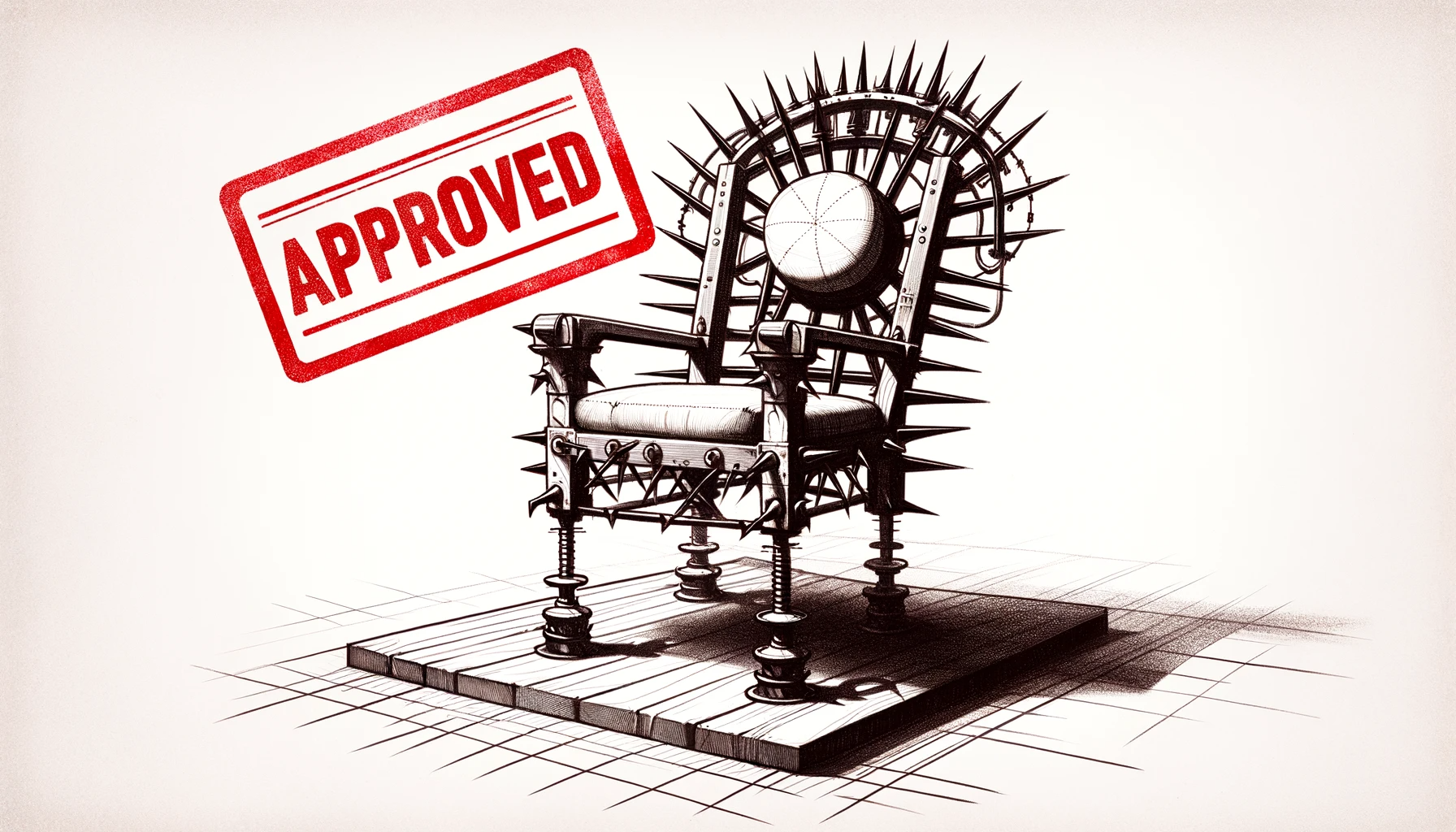#3: Sitting Uncomfortably? The Unwelcome Art of Bad Design
In a world where we've mastered the art of self-driving cars and space tourism, it's perplexingly comical – or tragically ironic – that we still encounter the bane of everyday life: the uncomfortable chair. This seemingly trivial discomfort opens up a larger discourse on the pervasive nature of bad design in our society. Despite our advancements in technology and design, we often find ourselves ensnared in the clutches of poorly thought-out products.
It's a classic battle: cost efficiency vs. user comfort. In the quest to keep prices low, manufacturers often cut corners, leading to products that are the physical equivalent of a shrug. Cheaper materials might save a few dollars, but they also transform sitting into a game of musical chairs, where nobody wants to be left sitting when the music stops.
Consider the everyday office chair, which often feels more like a medieval torture device than a seat. This trend of sacrificing comfort for cost-cutting turns the act of sitting into a test of endurance, emblematic of a broader issue in product design and manufacturing.
Reflect on the standard keyboard, a straight path to carpal tunnel syndrome, and public transport seats that seem to discourage comfort rather than invite it. These are classic examples of the one-size-fits-all fallacy in mass production, where individual needs are sacrificed for uniformity and cost efficiency. While the market offers ergonomic keyboards and more comfortable alternatives, their hefty price tags relegate them to the realm of luxury rather than necessity. This disparity illustrates a troubling disconnect: between products designed for the masses and those catering to the comfort of a select few who can afford them.
In an era of mass production, uniqueness often becomes the first casualty. Imagine a world where chairs are made with the same carelessness as a hastily written text message – "good enough" replaces "well-crafted." These chairs are like ill-fitting clothes; they cover the basics but don't quite match our individual contours.
Somewhere between the drawing board and the showroom floor, the end user becomes a mythical creature – acknowledged but never truly understood. The result? Products that seem to be designed for a faceless, formless, and apparently discomfort-immune consumer.
Bad design does more than cause physical discomfort; it can also have a profound impact on our psychological well-being. Constant exposure to poorly designed environments and products can lead to frustration, diminished well-being, and a subtle feeling of being undervalued. Living in a world where every interaction with a product reminds us that our comfort and needs are secondary can subtly erode our sense of self-worth.
The prevalence of bad design speaks volumes about our societal values. It reflects a culture where efficiency and profits are prioritized over human-centered needs. This affects not only individual users but also has broader social implications, especially in terms of accessibility and inclusivity in public spaces and transportation.
Why is comfort often an afterthought in design? It's akin to making a birthday cake that looks stunning but tastes like cardboard. The aesthetics might draw us in, but it's the comfort that forms lasting relationships. An uncomfortable chair is more than a nuisance; it's a missed opportunity for designers to show that they understand and care about the user experience.

